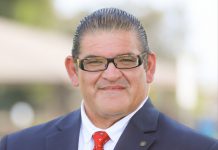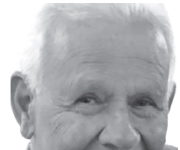By RICK LONGINOTTI and MIREYA GOMEZ-CONTRERAS
This column shines a light on what we already know. Sometimes we wish that reality were different — and that makes us forget what we know.
Anyone over a certain age who has driven the freeways of the Bay Area or Southern California knows that widening highways doesn’t work to reduce congestion beyond the short-term.
The research confirms our experience.
• In Los Angeles, a study reports that travel speeds are just as bad or worse after widening Highway 405 for a carpool lane.
• The California Air Resources Board commissioned UC Davis researcher Susan Handy to survey studies on highway expansion. She reports that “adding capacity to roadways fails to alleviate congestion for long because it actually increases vehicle miles traveled (VMT).” Handy explains that once a highway expansion project alleviates some congestion, drivers opt for auto trips rather than other modes, or take longer trips, or trips that they didn’t take when the highway traffic was bad. And some people, thinking that the lower congestion will last, decide to relocate farther from their jobs.
• In “The Fundamental Law of Road Congestion: Evidence from US Cities,” the authors found a one-to-one relationship between additional highway lanes and additional vehicle travel. Adding a lane in each direction to a four-lane highway (a 50 percent increase in lane-miles) results in a 50 percent increase in VMT.
But we know this. Watsonville City Council member Rebecca Garcia told about her many-year commute to San Jose. Not long after widening Highway 101, the highway quickly became congested again.
So if widening highways doesn’t work, what can be done for the thousands of people stuck on Highway 1? When Susan Handy was asked this question at her Santa Cruz talk in 2016, she responded, “Give people alternatives to traveling on Highway 1.”
Several alternatives are coming before the Regional Transportation Commission at their meeting on Jan. 17. There’s “Bus-on-Shoulder,” which would dedicate the shoulder of Highway 1 to buses. There’s transit on the rail corridor. METRO is asking the Regional Transportation Commission (RTC) to study ridership, routes, and cost in order to best determine whether that transit should be a rail vehicle, Bus Rapid Transit or other. And there is prioritizing bus service on Soquel Drive and Freedom Boulevard.
Unfortunately, the Watsonville City Council is on record as supporting expansion of Highway 1 — as well as the transit alternatives. Even if we lived in a world where expansion of highways really worked, it is not financially feasible to build a new HOV (carpool) lane in each direction on Highway 1. As Council member Trina Coffman-Gomez reports, “Construction to accommodate a third lane would involve the reconstruction of every interchange/overpass and the two rail over-crossings at a very high cost.” She estimates that the extra lanes “would cost between $600 million and a billion dollars to construct.”
In 2010 the Federal Highway Administration (FHA) told the staff at the RTC that the HOV lane project was not financially feasible, hence they were going to cut off federal funds for the project’s environmental review. In response, the RTC Executive Director George Dondero sent a memo to the FHA, claiming “Santa Cruz County can reasonably be expected to pass a sales tax measure to fund the Highway 1 HOV lanes project.” Dondero told the FHA that “full project funding” would be accomplished by a local sales tax measure in 2014. (What actually happened was a 2016 ballot Measure D containing funding for just a fraction of the HOV lanes project: four miles of auxiliary lanes (exit-only lanes) from Santa Cruz to Aptos.) The feds didn’t accept Dondero’s funding explanation. In a letter in May 2011 they wrote, “Federal Highway Administration has determined the Highway 1 HOV Project does not have sufficient funds to cover the $503 Million HOV Lane Alternative.”
The RTC staff persists in claiming that the HOV project isn’t dead. It’s just waiting for funding prospects post-2035, according to the staff report. Yet federal grants have dried up and the state is prioritizing sustainable transportation over highway expansion. The RTC staff is recommending two more expensive projects on Highway 1: auxiliary lanes and ramp metering. It’s not that staff believes these projects will improve congestion. Outgoing Executive Director George Dondero said, “I never said that the auxiliary lanes in Measure D would improve congestion.” Staff is recommending auxiliary lanes to “make room between the interchanges for the addition of High Occupancy Vehicle Lanes.” The unrealistic dream of the HOV lanes (some day after 2035) is guiding today’s spending priorities.
The irony for Watsonville residents is that this futile plan to relieve congestion on Highway 1 is being promoted as benefitting Watsonville commuters. Even RTC commissioners who know that auxiliary lanes don’t relieve congestion say, “The voters want this.” Really? Do Watsonville residents want illusory solutions, or real alternatives?
•••
Rick Longinotti is co-chair of Campaign for Sustainable Transportation. Mireya Gomez-Contreras is a Watsonville native. Their opinions are their own and not necessarily those of the Pajaronian.












